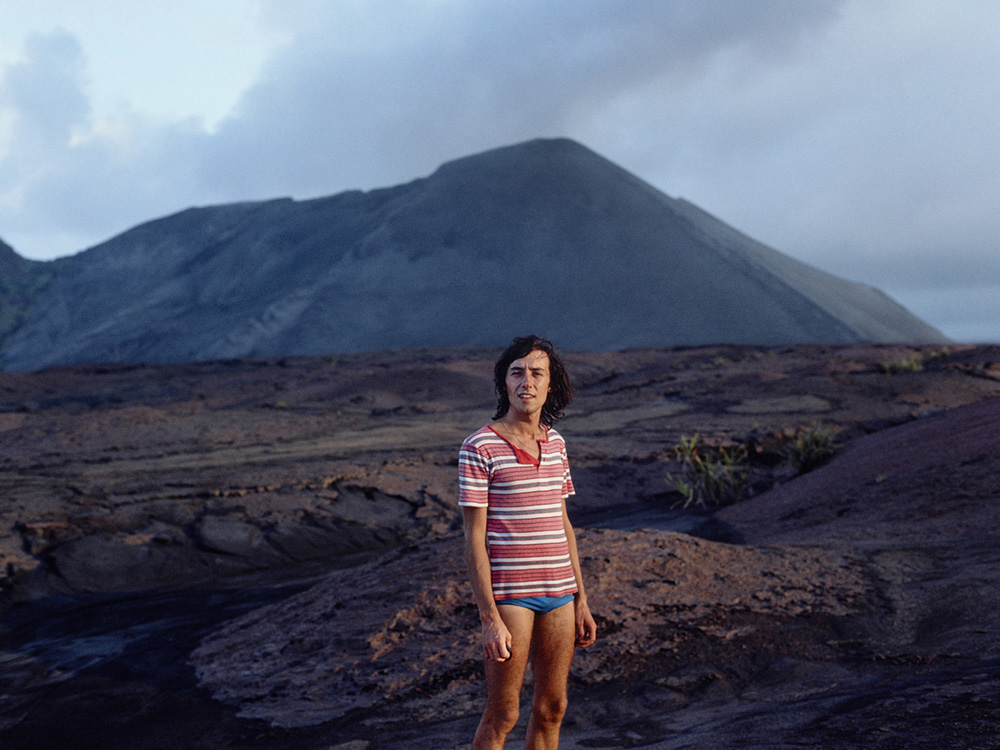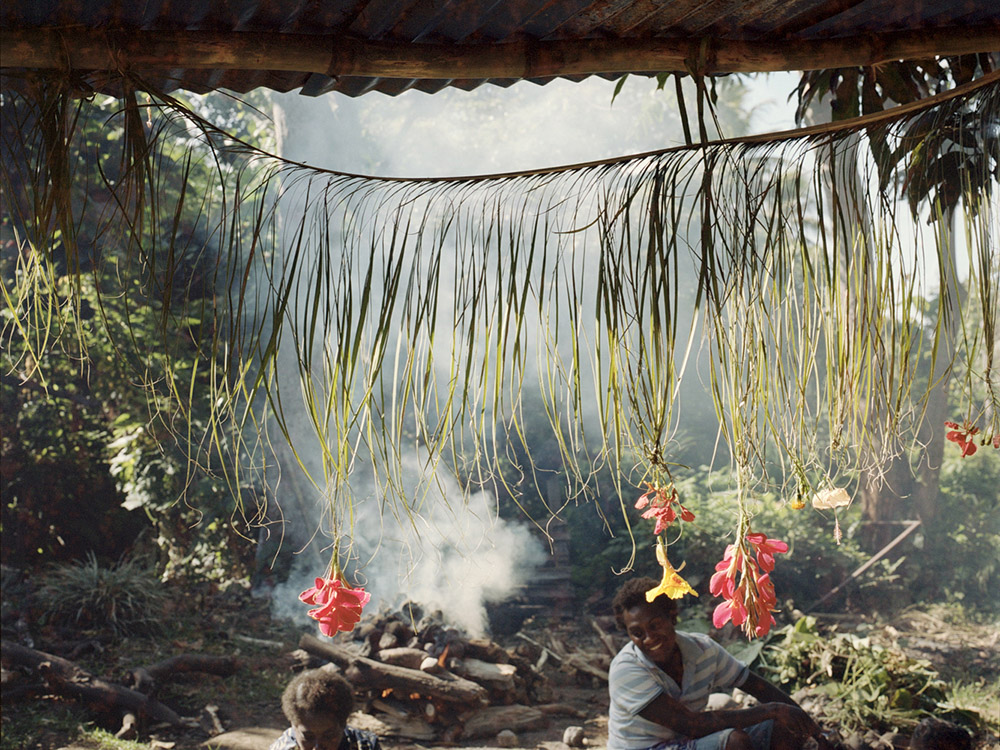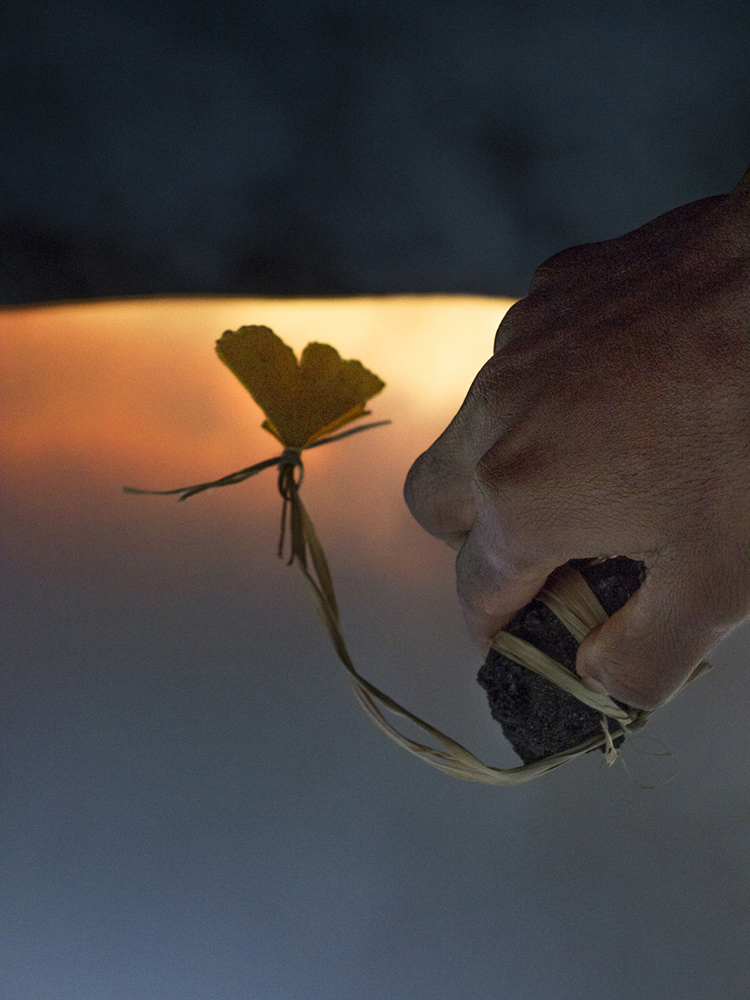blog
Interview with photographer Camille Mazier

Archive 1977, self portrait of my father in front of Yasur volcano in Tanna ©Camille Mazier
F-Stop Magazine: How did you first become involved in photography and what led to you working in this medium as an artist?
Camille Mazier: My parents always surrounded me with art books and took me to exhibitions. They were both teachers, and very interested in images, their meanings, and how we can create an image. As a little girl, I wanted to become an illustrator, then a painter and a writer. Later as a teenager, I used my parent’s first digital camera, and loved to play with different framings, light, and blur… So I was lucky to know very early what I wanted to “do for a living”.
I studied photography to free myself from the technical part of it, and to develop my eye by learning from other photographers around the world and from different eras, and by being guided by good teachers from photo schools: Gobelins, Renoir and Brassaï in Paris.
F-Stop: The current issue of F-Stop Magazine includes images from your project “I will be as strong as a Moai,” can you tell us about this project?
CM: Yes, first I need to briefly explain my story. My father suddenly died from brain cancer in 2015, I was 24 and he was 62. Just after his passing, I went to the North of Norway, looking for a white silent space to take out my emotions. I realized the series “There was no other way out but silence,” which shows the different emotions I experienced during this painful event. A few years later, I needed to “get back to life” and to show the world that grieving is not only about crying and feeling gloomy. That we can also find joy, at a certain point, if we handle it.
So, I created the “I will be as strong as a Moai” project from 2017 to 2019. I went to the South Pacific, following in my father’s footsteps, as he was a teacher in Vanuatu early in his career, 40 years prior. I needed to connect with my father’s (hi-)-story and to connect with the places and people that he knew.
He told us a lot about his life there, and he took a lot of pictures. Before I left France, for a 3 months trip, I didn’t know what I would find there, I didn’t know if any people would remember him. I took some prints of his pictures with me. And on my 2nd day in Tanna, Vanuatu, my guides took me to his former school. I met a woman, Ruby, she can still speak French, and said in French “Michel Mazier, yes I remember very well about him”. Well, I cried. But these were joyful tears. So she took me to visit his classroom, even his house, and then I met many of his former pupils who remembered and liked him.
Ruby became a teacher like my father, and she is retired now.
This journey took me farther than I thought and that was beautiful.
Also I released myself from the task that I gave to myself, to pour my father’s ashes in the volcano on Tanna Island. It was an old wish of his, but we scattered his ashes in our garden in France according to his wishes, and my family decided to plant a Ginkgo tree above it. Through the yellow Ginkgo leaves that I brought with me, and poured in the volcano, I returned ashes to ashes, my father’s to the volcano’s and vice versa. This symbolic ritual acted as a bond to my father and the land nourishing our souls in life and death.
I ended this trip by crossing the Pacific Ocean to land on Rapa Nui (Easter Island). I needed to see the Moai, those great statues from the past millennia. I went there because I was reminded of the reassuring words my father texted me during his illness: ‘I will be as strong as a Moai’.

31 O’, ©Camille Mazier
F-Stop: What is your process for making these images or your creative process more generally?
CM: Generally I would like people to allow themselves to find their own peace. So I’m showing my way, like an open book, inviting others to find their way.
And more concretely, if I decide to take pictures on a subject, it is because it touches me and that I will personally get involved. When I take pictures, I am in such-and-such an emotional state and in a natural way, the images come out and tell a story.
F-Stop: How did you determine what images of your father’s to include in the project?
CM: He took lots of (!) pictures and I chose the ones that could link to my state of mind through this project. The ones that matched my own pictures, pictorially speaking. Also I wanted to show that the custom there did not die, 40 years after he visited these islands, time was frozen. I was surprised to see that in some photos, you can’t tell if it is an archive or one of my recent photos. This further strengthens the link to my father’s story.
F-Stop: How do you choose what or who to photograph, what were you looking to capture?
CM: I wished to show my own story through my father’s path, being touched to meet people who loved him, and showing that they were touched to meet me too. It’s a tribute to my father but also to these people, to their life and story. I wanted to show my happiness, how proud I was of him and them. When I took these pictures I was trying to keep alive my father’s respect for this place and for these people.
F-Stop: What do you hope people experience or feel when they look at your photographs?
CM: I hope these images give emotions to people, that I can touch them with my photos. I’m very happy when it takes them out of what they were thinking about and drives them to their own stories.
I hope people can have a different look on mourning, and that they can feel joy through my story.

from ginkgo to ashes ©Camille Mazier
F-Stop: Do you have a favorite image in this series? If so, which one and why is it the image that speaks to you most?
CM: I would say the volcano ones, as this act was very important to me and emotionally strong. It is as if it opened a new door to connect with my father and spirituality. The yellow ginkgo leaf falling into the dark crater of the volcano, and (sorry that makes two!) the eruption one with red lava, like a natural fireworks, joy and life exploding.
F-Stop: Are you working on any other projects currently?
CM: Yes, I am showing a work in progress on my Instagram account @camillemazier, “Modes of resilience”. I started it in 2020 and want to show different ways of living closer to nature and get inspired by it. Also I’m very inspired by trees, so I’m thinking about paying tribute to them and taking some tree portraits, in my way…
F-Stop: What photographers or other artists inspire you?
CM: I love various artists that have an approach close to mine and also very different works. A short selection would be: Rineke Dijkstra, Rip Hopkins, Peter Granser, Taysir Batniji… Also Van Gogh and more generally the Impressionist movement ; Jim Carrey for his words ; Evan McCohen for his spiritual drawings … and more…
To see more of Camille Mazier ‘s work check out the Portfolio 2021 issue of F-Stop or visit: www.camilledeuxmille.com
Location: Online Type: Featured Photographer, Interview
Events by Location
Post Categories
Tags
- Abstract
- Alternative process
- Architecture
- Artist Talk
- artistic residency
- Biennial
- Black and White
- Book Fair
- Car culture
- Charity
- Childhood
- Children
- Cities
- Collaboration
- Community
- Cyanotype
- Documentary
- Environment
- Event
- Exhibition
- Faith
- Family
- Fashion
- Festival
- Film Review
- Food
- Friendship
- FStop20th
- Gender
- Gun Culture
- Habitat
- Hom
- home
- journal
- Landscapes
- Lecture
- Love
- Masculinity
- Mental Health
- Migration
- Museums
- Music
- Nature
- Night
- nuclear
- p
- photographic residency
- Photomontage
- Plants
- Podcast
- Portraits
- Prairies
- Religion
- River
- Still Life
- Street Photography
- Tourism
- UFO
- Water
- Zine

Leave a Reply